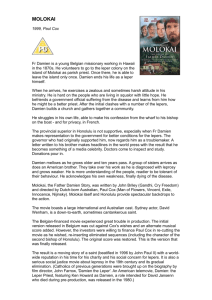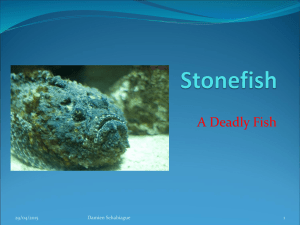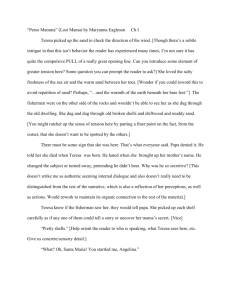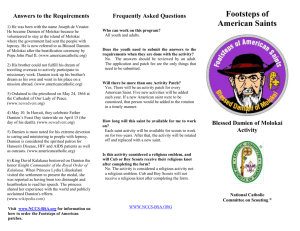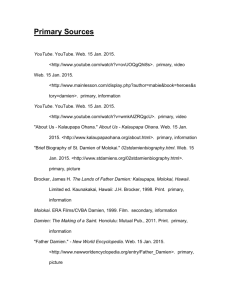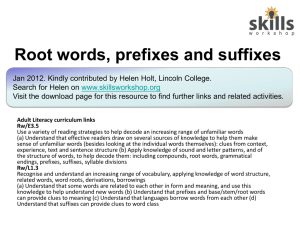Fr Damien de Veuster 1840
advertisement
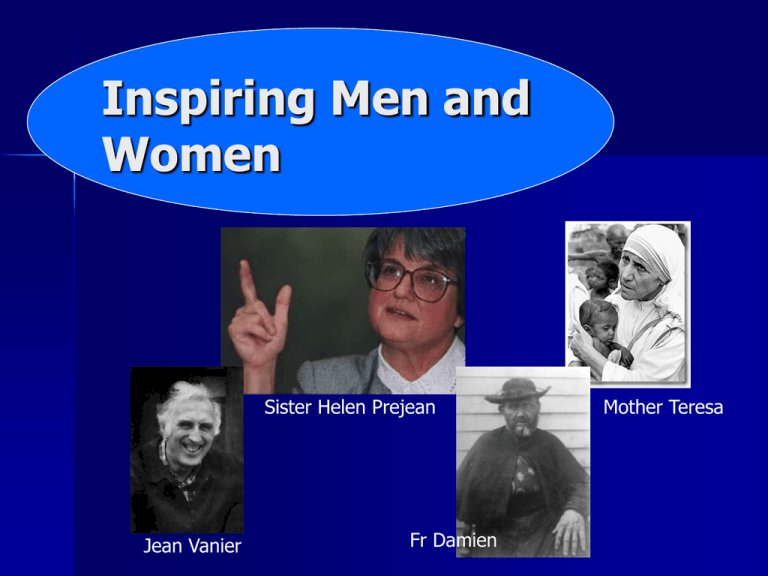
Inspiring Men and Women Sister Helen Prejean Jean Vanier Fr Damien Mother Teresa Fr Damien de Veuster Damien was a Belgian priest, who volunteered to serve the lepers on the Hawaiian island of Molokai, where they were herded into isolation. 1840 - 1889 Damien was shocked to discover that the lepers were literally left to rot. Molokai was a place of humiliation, suffering and death. But Damien treated them with respect and gave them back their dignity. He worked to improve conditions and helped the lepers to get medical assistance. Damien set up work groups that built roads, cottages and clinics. He organised sports events and set up a choir and a band. He treated the lepers not as victims, but as human beings. He restored the dilapidated church and held prayer services and masses. The church still stands today. He worked tirelessly for the people. Eventually he caught leprosy himself and died on Molokai at the age of 49. In the grounds of the church stands a statue of Fr Damien to show how beloved he still is by the people of Molokai. Mother Teresa of Calcutta Agnes Bojaxhu was born in Yugoslavia in 1910. She entered the convent at the age of 18, taking the name of Sr Teresa. She sailed for India and for years, taught at a girls’ Catholic school. Most of the students were from wealthy families. While on a train returning from her annual retreat, Sister Teresa felt the call of God to leave the security of her convent life. She believed God was calling her to minister to the poorest of the poor on the streets of Calcutta. She responded to this call, and left the convent in 1948. She lived very simply, and spent her days picking up dying people from the streets. In 1950 she opened the first Home for the Dying, where the outcasts of Calcutta could die with dignity. Many girls she had taught at the Loretto convent school joined her in her work. They too, dedicated their lives to Jesus in serving the very poor. In 1950, Sr Teresa’s order became known as the Missionaries of Charity. She taught her nuns to live very simple lives, to pray constantly and to see the face of Jesus in every person, especially the poorest of the poor. She and her sisters set up homes not only in third world countries, but also in New York and Rome. She saw spiritual poverty as the worst poverty of all. Mother Teresa won the Nobel Peace Prize in 1979 for her service of love to the world. She accepted the award – ..”in the name of the hungry, the naked, the homeless, the crippled, the blind, the lepers, of all those people who feel unwanted, unloved, uncared for throughout society, people who have become a burden to the society and are shunned by everyone.” - Mother Teresa’s Acceptance Speech Mother Teresa died on September 5, 1997, at the age of 87. Her Missionaries of Charity continue to grow and serve the poorest of the poor. Her Order is currently going through the process of having Mother Teresa declared a saint. Jean Vanier Jean Vanier began his special mission to the intellectually disabled when, in 1963, he visited a number of institutions. He was shocked by the poor conditions in which these people lived. In one of them he met two men, Philippe and Rafael. Born in Switzerland in 1928 He knew that intellectually disabled people deserved better. With the help of a psychiatrist, Jean set up a home where he was joined by Philippe and Raphael. This was the birth of L’Arche, named after Noah’s Ark, the symbol of life, hope and covenant between God and humankind. Jean began to understand the needs of Philippe and Rafael. This life of simplicity attracted many friends who helped in practical ways, and little by little a small Christian community was built around them. Jean began to understand the spiritual needs of the intellectually disabled people who joined the community. Jean shared the conviction with his friend, Fr Thomas Philippe, that God had called them together to accomplish something. Jean was inspired by the life of Jesus. He realised that our society has much to learn from the intellectually disabled. In our society which places so much value on production and competition, Jean says we have much to learn about sharing, acceptance and joy from people with a mental disability. To date, L’Arche has more than 120 communities in over thirty countries, including New Zealand. L’Arche has been called one of the most signifiicant Christian ministries of the 20th century, and a living sign of the civilisation of love. Sister Helen Prejean When Helen Prejean, a Sister of St Joseph, left her teaching job to live in a housing project, her life changed. She became pen pals with Patrick Sonnier, a convicted killer of two teenagers, who was on Death Row. Sonnier was sentenced to die in the electric chair of Louisiana’s Angola State Prison. Sonnier invited Helen to visit him regularly as his spiritual advisor. On the night of April 5, 1984, she accompanied him to his execution. Sister Helen’s last words to Patrick Sonnier - “You look at me, you look at my face. I can’t bear the thought that you would die without seeing one loving face. I will be the face of Christ for you.” Sr Helen was greatly affected by the experience of watching another human being be executed. She said: “I couldn’t watch someone be killed and walk away. Like a sacrament, the execution left an indelible mark on my soul.” She wrote about her experiences in a book called Dead Man Walking, which was made into a major motion picture. She has educated the public about the death penalty by lecturing, writing and speaking all over the USA. She is outspoken in her oppostion to the death penalty as an inhuman and immoral act. Sr Helen continues to counsel inmates on Death Row and accompany them to their execution. Sr Helen also works with the families of both the murderers and their victims. She says that prayer and dedication drive her. When she’s in the right place at the right time, Sr Helen says she is aware if God’s presence. Although the Catholic Church teaches that the death penalty is almost never morally acceptable in modern society, there are around 3,000 people awaiting execution in the United States. The End By Zita Smith This Powerpoint Presentation fits with the RE Curriculum Unit: Inspiring Men and Women (Christian Lives – Part 2)
